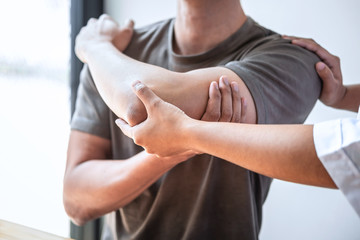
How to avoid overuse injuries?

Running season brings about a unique profile of injuries called overuse injuries. These are injuries resulting from repetitive microtrauma of musculoskeletal structures such as muscles, tendons, bone and ligaments, occurring over a period of time.
Acute vs Overuse Injuries
In contrast, acute injuries occur from a single traumatic event. Examples include fractures from falls and grade three muscle tears from forceful overstretching.
What causes overuse injuries?
Training errors are responsible for most overuse injuries. The term going from ‘zero to hero’ encapsulates this well. Overuse injuries are likely to occur from sudden rapid increases in any training factors. These factors include intensity, duration or frequency.
Another cause of overuse injuries is doing an exercise with incorrect form and continuing to do this for a long period of time.
Below is our clinic’s top tips in how to avoid overuse injuries:
How to avoid overuse injuries:
1. Exercise Grading
Exercise grading is the gradual increase in loading for any exercise so that overload doesn’t occur. This is an effective way of avoiding overuse injuries. Exercise grading allows for the body to adapt physically and physiologically to the increased demands of any exercise so that when the same exercise is repeated, there is reduced risk for developing injuries.
2. Take adequate rest days
We find most athletes avoid the dreaded rest day however, we really advise our clients training for endurance events to implement 1-2 rest days per week. Rest days allow for repair of damaged structures in the body. This is important in the adaptation process of our bodies to better tolerate increased exercise demands.
3. Maintain Flexibility
A common factor for any injury (be it acute or chronic) is decreased flexibility in the soft tissues of our musculoskeletal system (muscles and tendons). Decreased flexibility means reduced range of motion and leads to a more inefficient way of producing movement. Over time, this leads to injury.
We therefore recommend athletes training for long distance/endurance events to implement a daily mobility programme consisting of stretches and self release techniques. This can include trigger pointing, foam rolling and static stretching. Yoga and Pilates are excellent ways of incorporating mobility into a training programme.
4. Get adequate sleep
Along with appropriate rest, sleep is just as important. Sleep is vital to allow the repair process to occur. This is when the micro-damage done to muscles, tendons and bones are repaired. We should all be familiar with the recommendation is 8 hours of sleep a night.
5. Proper Nutrition/Hydration
Proper hydration helps with building muscles i.e the repair process after exercise. Water helps with transport of nutrients into cells and waste products out of cells. A high carb meal pre workout means that you have a high energy reserve. This leads to a longer time before fatigue sets in and reduces the risk of injuries. Protein is vital for all physiological processes including the rebuilding of damaged structures in the body. Therefore, a high protein diet is just as important.
For more information on overuse injuries, or if you are currently nursing an injury, don’t hesitate to book in to see one of our physiotherapists to help you with your recovery. Call us today on 07 3352 5116 or book online.




